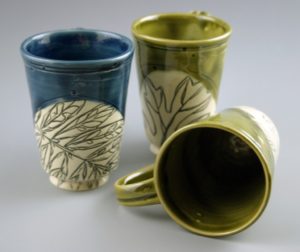a hard lesson
A few weeks ago, my youngest son showed me this video. Pretty cool.
That video brought me back to a sweet memory of the same son when he was about 4 years old. One of his favorite activities was to sit on the edge of the garden retaining wall and blow bubbles. On one occasion, after some time blowing, chasing and catching soapy bubbles, he came to me with a request. He wanted to color the bubbles. We discussed the possibility (or impossibility) – him insisting on paint for color and me suggesting food coloring (mom wins)
I mixed several drops of blue into the container and let loose the bubble maker. The bubbles were beautiful; glistening in the afternoon sun. But, not blue. He begged, ‘do more’. So, I added several drops of red to our blue solution to create a deep violet. Nope. No difference. They were just plain ol’ run of the mill bubbles. Oh the disappointment. My hasty dissertation on film color theory did nothing to reconcile the expectations of this 4 year old with the reality of the outcome (I’m pretty sure someone was ready for a nap about this time ::pick me::)
There are some natural laws that we cannot concede (unless you’re in space, because…well, NASA) You simply can’t color bubbles and then stretch the outer surface to just this side of it’s tensile limit and still see the color. We can’t have everything. That’s a hard lesson for a four year old (and any adult that believes like a four year old)

I’ve been working on new forms and surface design since summer. Reclaimed a lot of clay. Wanting to be freer with the surfaces, I went about creating looser forms and playing with line. Just before the end of the semester, I unloaded a glaze with the last of the mugs of the old design, a couple smallish drawn tiles and a test piece with design elements I thought I wanted. Oh the disappointment.
This far into the process, I’ve come to that point where I have to compromise some of what I see in my head (no comments from the peanut gallery) with what I can actually do. And then, some elements that I thought I could carry over from the earlier work just need to be abandon altogether. The lines didn’t fit the surface that was too demanding for the glaze that was too delicate for the lines that didn’t fit the surface that didn’t…(you get it) Talk about expectations not meeting outcomes.
So, I asked myself what I have a passion for and (the ‘and’ is important) if I have the skill to execute that passion.
After living with my test piece for several days, I came to this conclusion: I’m more about the lines than the forms. I just really want a canvas to draw on.
I love to draw. I can do that.
3 Comments
Comments are closed.
I found your post very thought-provoking. Being one who tends to get an idea, and then push to execute no matter the cost (sometimes ridiculously so), the idea of what do I have a passion for and where do I want to spend my resources really hits home. Perhaps 2016 will be a bit more about focus 🙂 Happy New Year
Hi Beth,
I was reflecting on much the same subject, what am I passionate about and is the life I’m living reflecting that passion. In at least part I had to answer no.
The work that I am paid to do is not my passion. I like the shop and many of the customers are wonderful, but keeping the shop running is not my passion. Yet because of my physical limitations, the time I put in at the shop means that I do not have the energy for what I want to do.
I talked it over with Mark and for the next few months I will continue to work at the shop. My wages from there pay for our youngest son’s tuition. His graduation day will be my independence day. Then I can refocus my activities to be in line with the things I am passionate about.
Linda,
I sooo understand this conversation. Sometimes I walk really slow (slothfully slow) within my passion. Even when I can’t create, I can problem solve design and keep my ideas moving. In this way, I feel like I’m still honorable to that passion. Independence Day will be here before you know it!